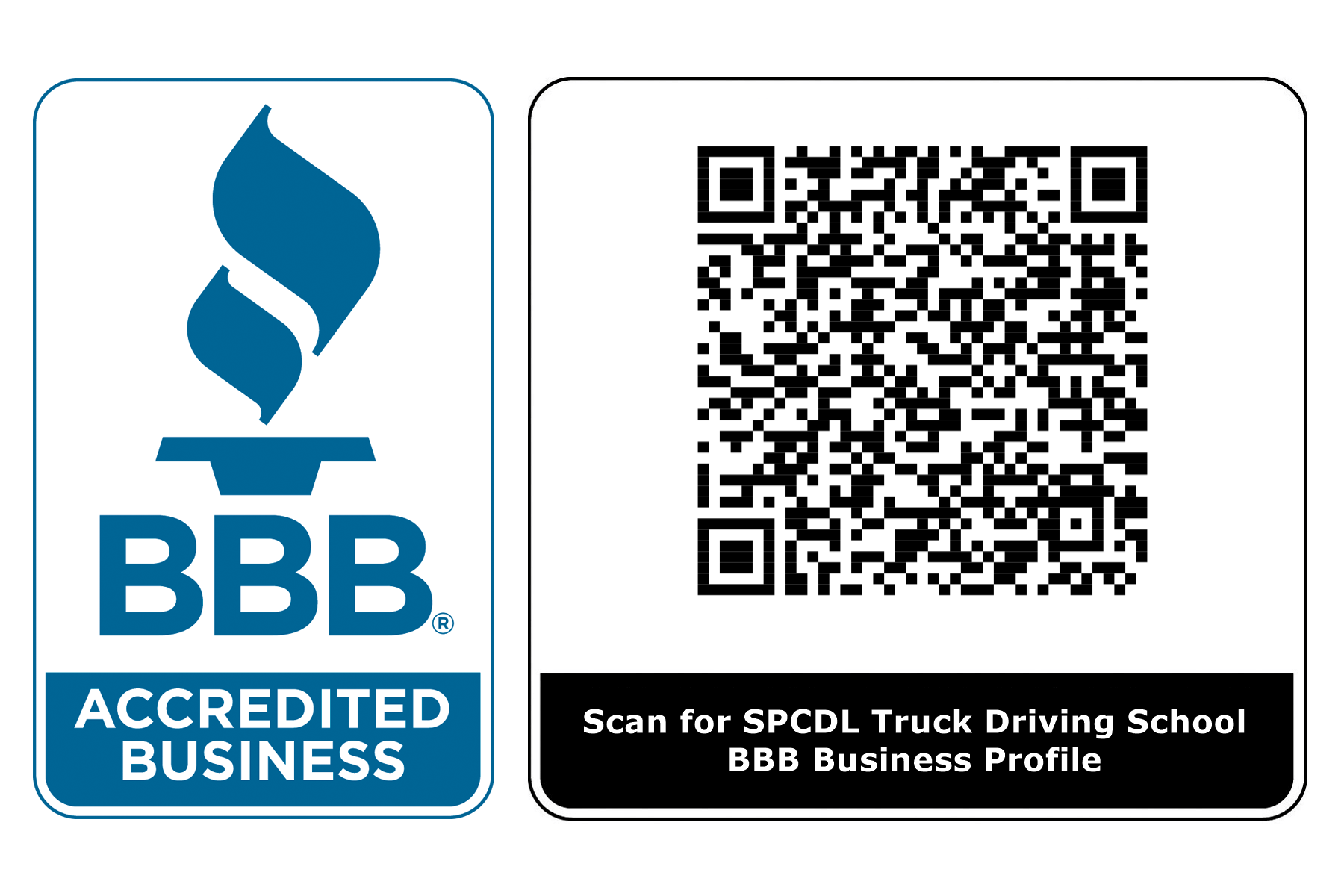Shortage of Qualified Commercial Drivers

The Shortage of Commercial Truck Drivers: Causes, Solutions, and Future Outlook
The commercial trucking industry is the backbone of the U.S. economy, responsible for transporting goods across the country and keeping supply chains moving. However, the industry is currently facing a significant challenge: a shortage of qualified drivers. According to the American Trucking Associations (ATA), the industry was short more than 80,000 drivers in 2021, and that number could increase to 160,000 by 2030 if the trend continues. This shortage affects businesses, consumers, and the overall economy.
For aspiring drivers, this shortage presents an incredible opportunity. By obtaining a Commercial Driver’s License (CDL), individuals can enter a high-demand field with excellent job security and earning potential. At SPCDL Truck Driving School, we help students train for their CDL and get started in a lucrative career as a commercial driver. Our comprehensive training covers Class A, B, and C CDLs, as well as Passenger Endorsement and Hazmat certifications, positioning students to take advantage of the current driver shortage.
Key Causes of the Truck Driver Shortage
1. Aging Workforce
One of the primary drivers of the truck driver shortage is the aging workforce. Many of today’s truck drivers are nearing retirement age, and the industry is struggling to attract younger workers to replace them. This gap is widening as experienced drivers retire faster than new drivers enter the field. The Bureau of Labor Statistics (BLS) has noted that the average age of truck drivers is higher than the national average for most other professions.
2. High Turnover Rates
The trucking industry faces a high turnover rate, which further exacerbates the shortage. Truck driving is a demanding job that requires long hours on the road, time away from home, and physical endurance. These challenges lead to burnout, with many drivers leaving the profession after just a few years. As a result, trucking companies are constantly searching for new recruits to fill open positions.
3. Regulatory Pressures
Regulations aimed at improving safety have also played a role in the driver shortage. The Hours of Service (HOS) rules limit the number of hours a driver can be on the road before taking mandatory rest breaks. While these regulations are essential for safety, they also limit the amount of time drivers can work, creating a demand for more drivers to cover the same amount of freight. Additionally, new Electronic Logging Device (ELD) mandates and other regulatory requirements make it more challenging for drivers to meet the industry’s demands.
4. COVID-19 Pandemic
The COVID-19 pandemic had a significant impact on the trucking industry, further deepening the driver shortage. Many driver training programs and CDL testing centers were forced to close temporarily, delaying the entry of new drivers into the workforce. In addition, health concerns and quarantine protocols sidelined many active drivers, further reducing the available workforce.
5. Compensation and Benefits
While some companies have increased pay and offered incentives, there is still a perception that truck driving does not offer competitive compensation relative to the demands of the job. Some drivers cite low pay, lack of benefits, and unpredictable schedules as reasons for leaving the industry. However, the current shortage is driving up wages, making this an ideal time for new drivers to enter the field.
6. Increasing Freight Demand
The rise of e-commerce and consumer expectations for fast delivery have placed additional pressure on the trucking industry. More freight needs to be moved across the country, but there aren’t enough drivers to handle the growing demand. This is especially true during peak times, such as the holiday season, when the need for delivery drivers spikes.
What the Trucking Industry is Doing to Address the Shortage
The trucking industry is taking several steps to address the driver shortage and make the profession more attractive to new drivers:
1. Increased Pay and Incentives
To attract new drivers, many trucking companies have increased wages, offered signing bonuses, and implemented tuition reimbursement programs to help cover the cost of CDL training. Some companies also provide performance bonuses and incentives for drivers who meet safety and delivery benchmarks.
2. Flexible Schedules
In response to driver retention challenges, some companies are offering more flexible schedules, allowing drivers to spend more time at home. Regional and local routes are becoming more common, giving drivers the opportunity to work closer to home and avoid long-haul trips that keep them on the road for extended periods.
3. Enhanced Recruitment Programs
The trucking industry is actively working to recruit a more diverse pool of drivers, including women, veterans, and younger workers. Partnerships with schools and training programs are helping to increase awareness of the career opportunities in trucking. For example, many programs are now promoting the benefits of truck driving to high school graduates and individuals seeking a career change.
4. Improved Working Conditions
Trucking companies are investing in new technology and better equipment to improve the working conditions for drivers. Modern trucks are more comfortable, equipped with advanced safety features, and offer better fuel efficiency. These improvements make the job more appealing and help reduce driver fatigue.
5. Technology Solutions
Advancements in technology, such as autonomous trucks and platooning, are being developed to help reduce the strain on the industry. While fully autonomous trucks are not yet a reality, these technologies could eventually help alleviate some of the driver shortages by enabling trucks to operate with fewer drivers on board.
Future Factors That Could Impact the Driver Shortage
While the trucking industry is making strides to address the current driver shortage, several future factors could either alleviate or worsen the situation:
1. Autonomous Vehicles
The development of autonomous vehicle technology could eventually reduce the need for human drivers. However, fully self-driving trucks are still years away from widespread use. In the meantime, human drivers will remain essential, especially for tasks that require decision-making, customer interaction, and navigating complex road conditions.
2. Government Regulations
Changes to regulations could impact the driver shortage in the future. For example, new HOS rules or emissions regulations could affect how much work drivers can perform. Staying compliant with these regulations will be crucial for the trucking industry.
3. Infrastructure Investments
As infrastructure improvements increase under initiatives like the Bipartisan Infrastructure Law, there will be a growing demand for commercial drivers to transport materials and goods. This could further strain the driver supply unless new drivers are trained to meet the demand.
4. Global Supply Chain Disruptions
Ongoing disruptions to the global supply chain, such as those caused by the COVID-19 pandemic, may increase the demand for truck drivers. Companies are looking to expedite deliveries, and a shortage of drivers could lead to longer delays and higher costs for consumers.
What Potential CDL Drivers Need to Know
For individuals considering a career in truck driving, now is an excellent time to enter the field. The demand for CDL drivers is high, and compensation packages are becoming more attractive.
Career Opportunities
Becoming a CDL driver offers job stability and high demand across various industries. With wages increasing due to the driver shortage, new drivers can take advantage of strong earning potential.
CDL Training and Requirements
To enter the field, new drivers will need to complete Entry-Level Driver Training (ELDT) and pass their CDL test. Obtaining specialized endorsements, such as a Hazmat or Passenger Endorsement, can lead to higher-paying opportunities.
Benefits of Being a Truck Driver
Truck driving offers flexibility, independence, and the opportunity to travel. For those who enjoy being on the road and working independently, it can be a fulfilling career with room for growth, including opportunities to become an owner-operator.
How SPCDL Truck Driving School Can Help
At SPCDL Truck Driving School, we are committed to helping new drivers get started in the trucking industry and address the growing driver shortage. Here’s how we can help you succeed:
Comprehensive Training for All CDL Classes
SPCDL offers in-person, one-on-one training for Class A, B, and C CDLs, as well as Passenger Endorsement and Hazmat certification. Our experienced instructors ensure that you are fully prepared for both the written exam and the road test.
Quick Path to Employment
Our students benefit from a 90% first-time pass rate, meaning you can start your career quickly and capitalize on the high demand for drivers.
Flexible Payment Plans and Discounts
SPCDL offers flexible payment options and discounts for veterans, first responders, and others, making it easier for you to complete your training without financial stress.
Real-World Experience
We provide students with hands-on training using the same equipment they will be tested on, ensuring that they are confident and ready to meet state and federal regulations, including ELD compliance and pre-trip inspections.
The shortage of commercial truck drivers presents both a challenge for the industry and an opportunity for new drivers. With demand high and compensation increasing, there has never been a better time to start a career as a commercial driver. At SPCDL Truck Driving School, we provide the training and support you need to enter the workforce and help address the driver shortage. Contact us today to begin your journey toward a rewarding career in the trucking industry.
Call Us on (909) 353-9897 or Fill Out the Truck Driving School Get Started Form on Our Website Anytime and We Will Get in Touch with You.



